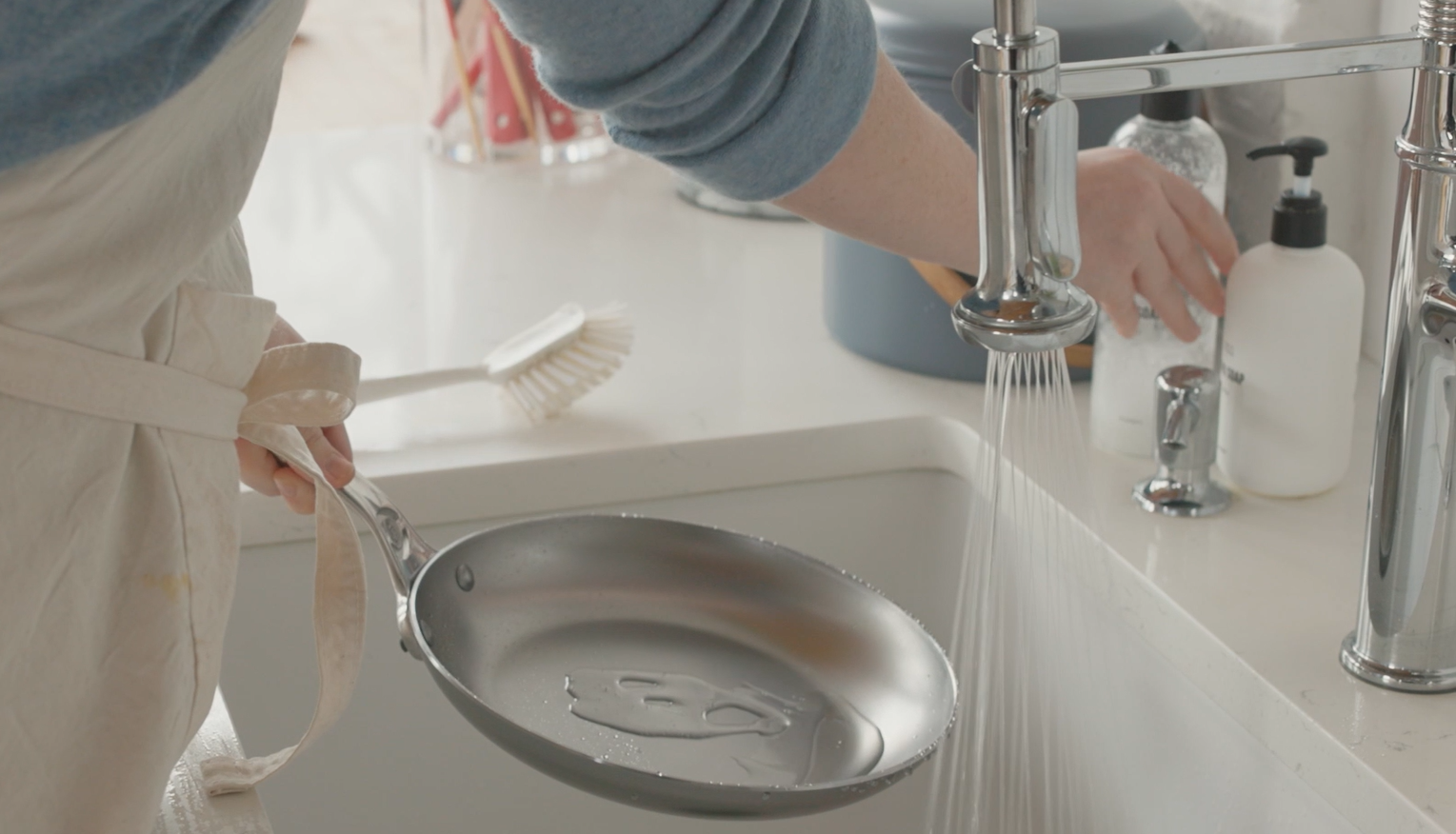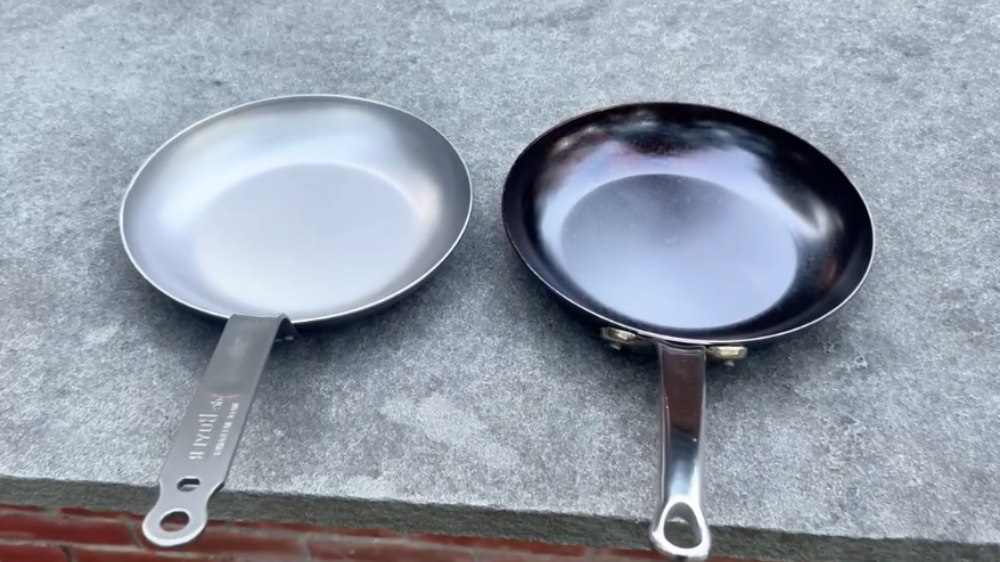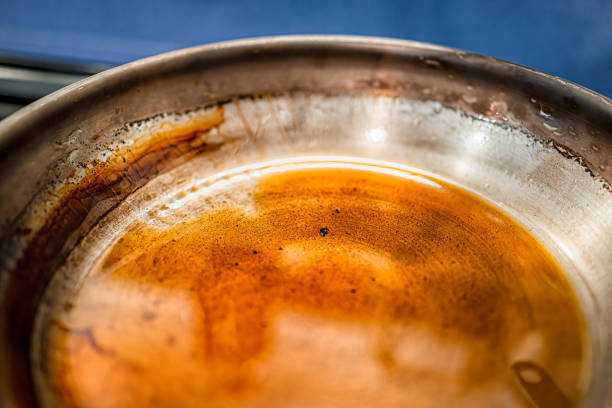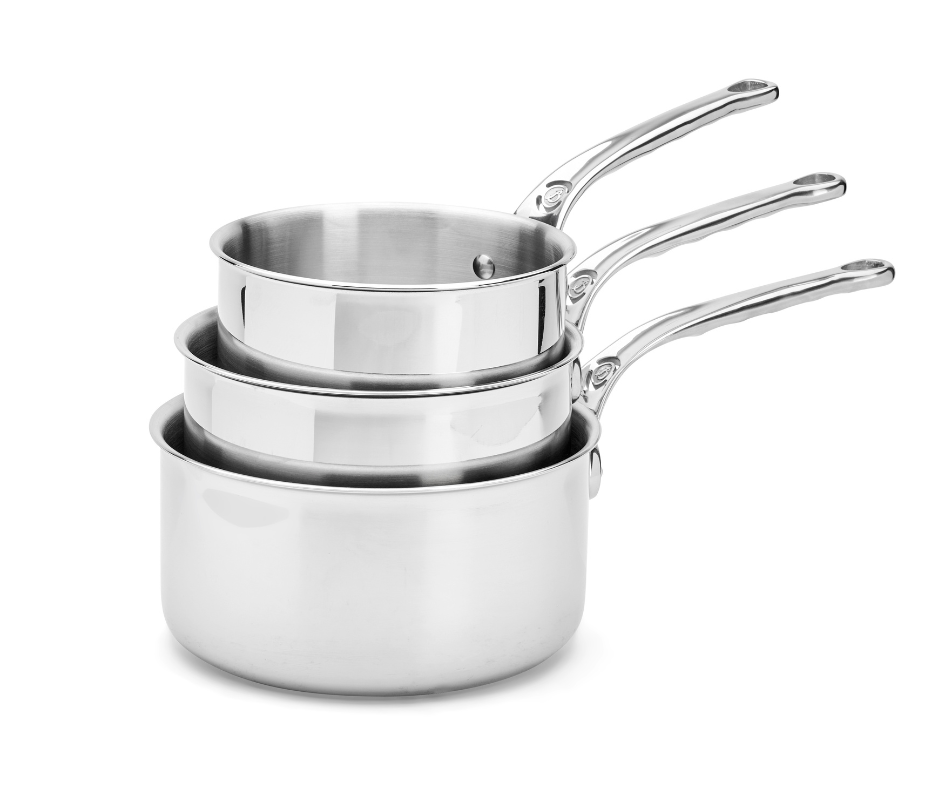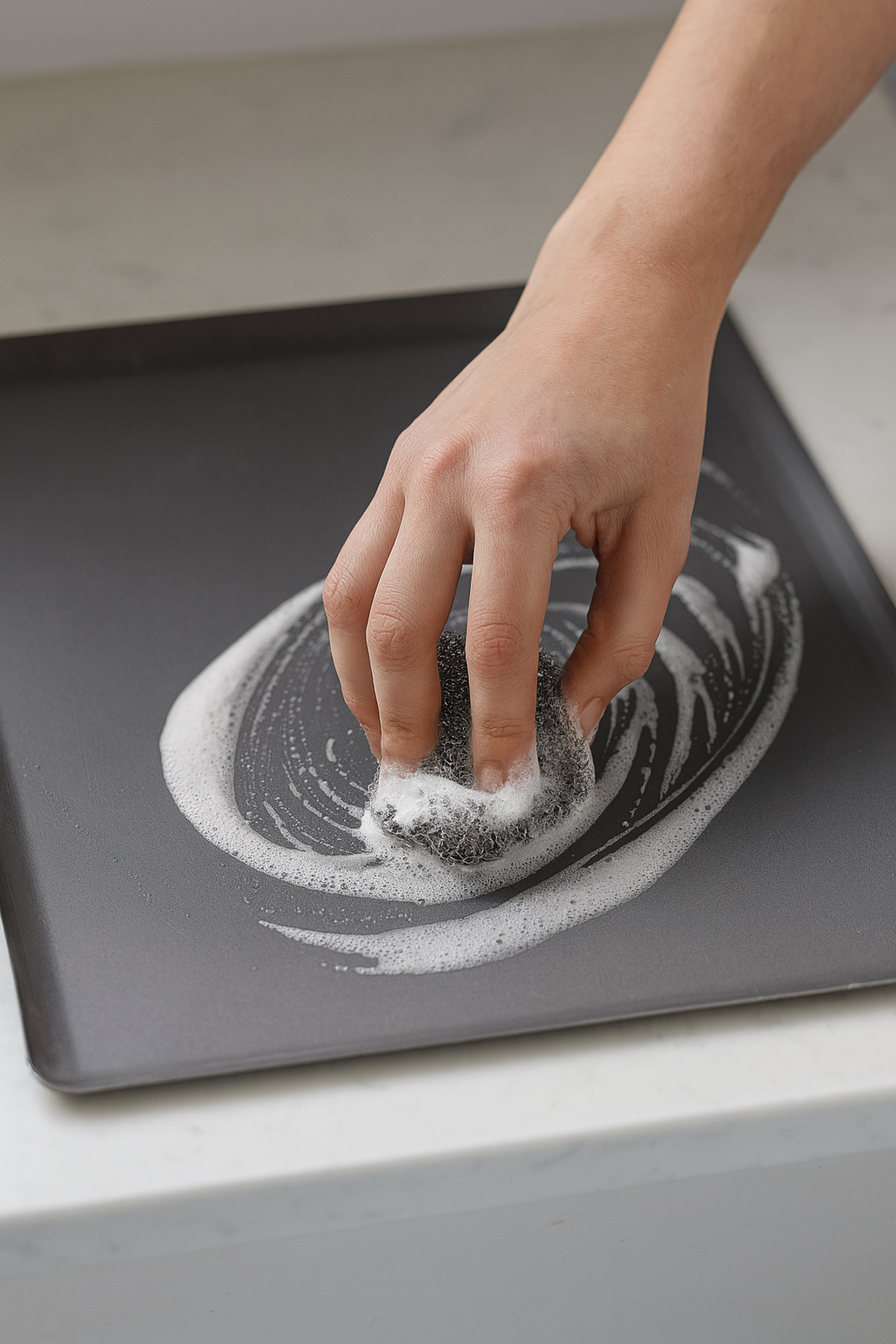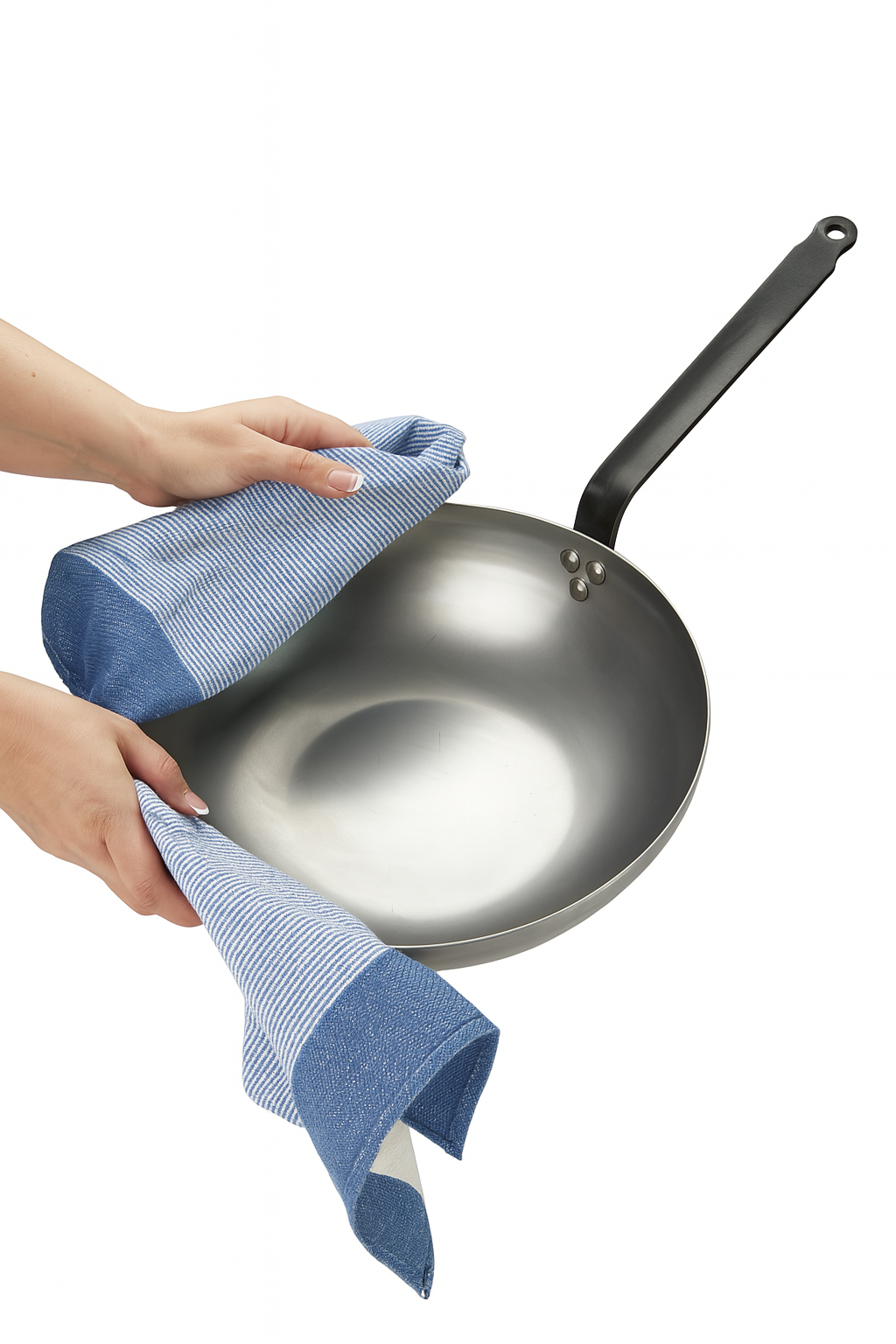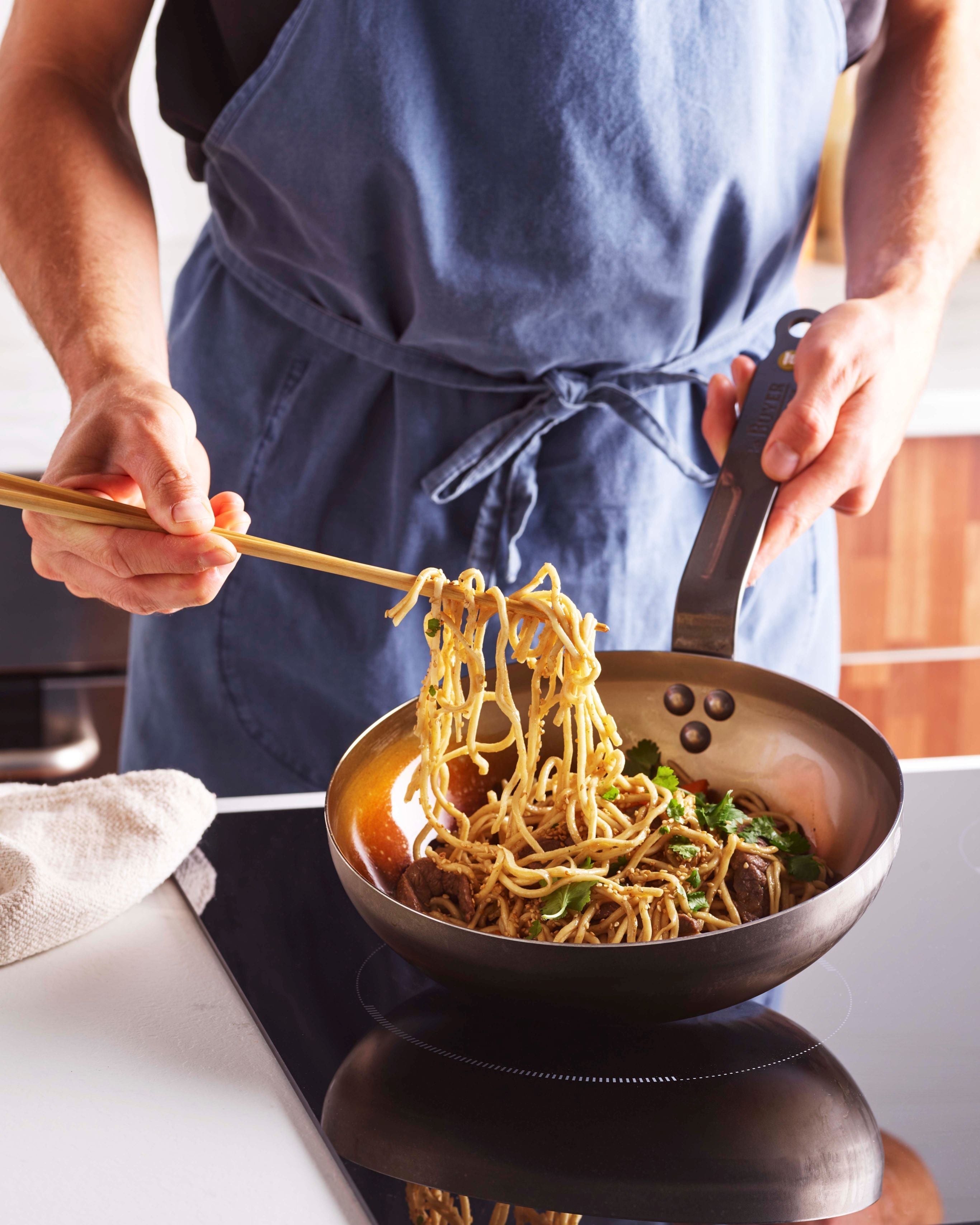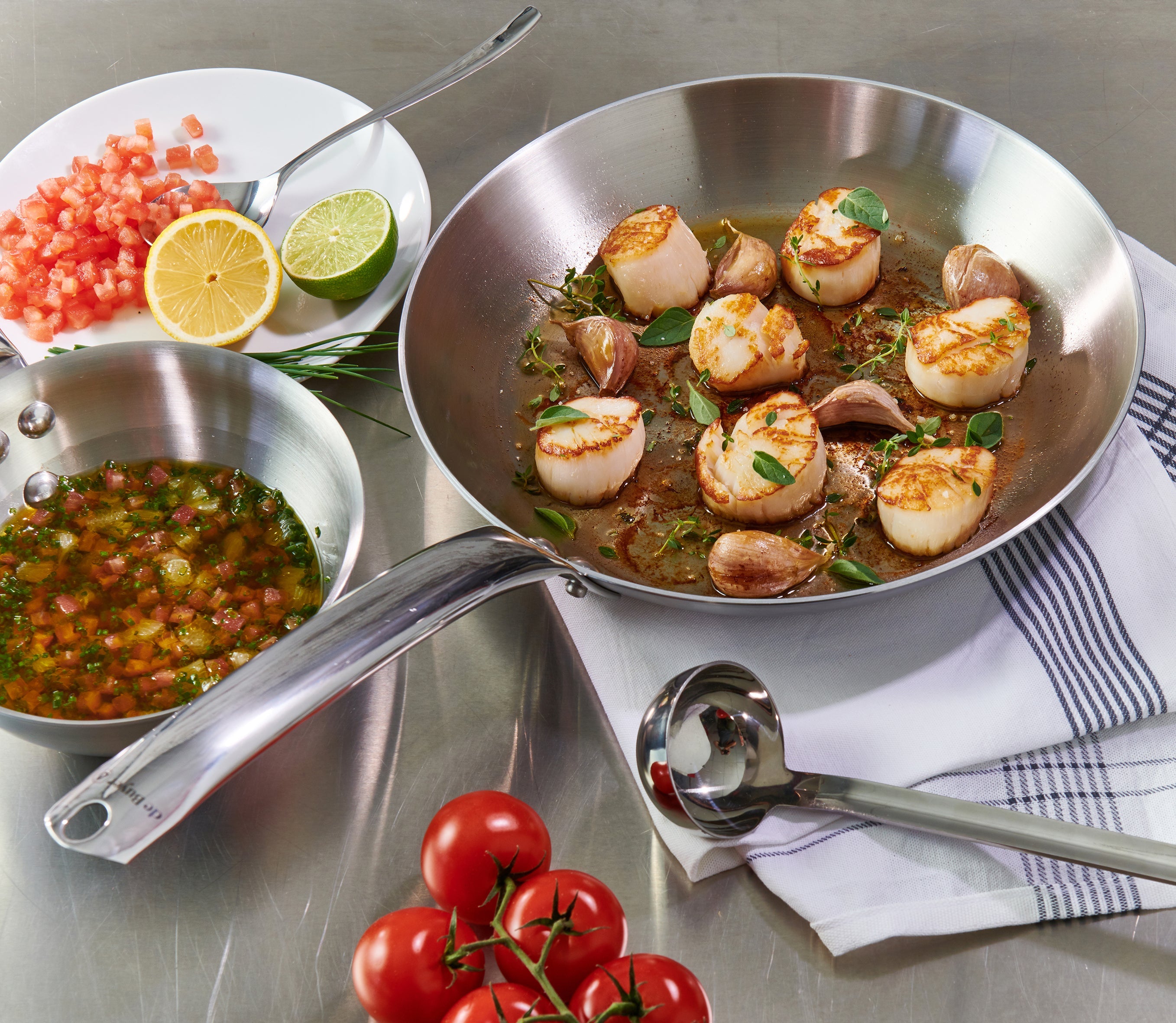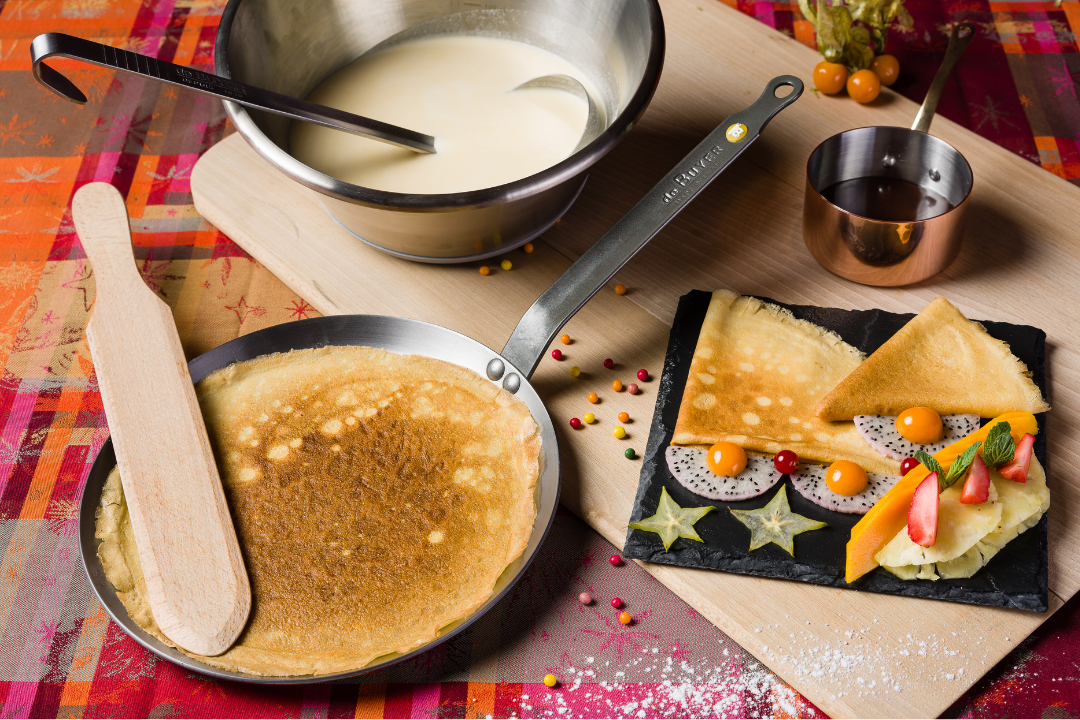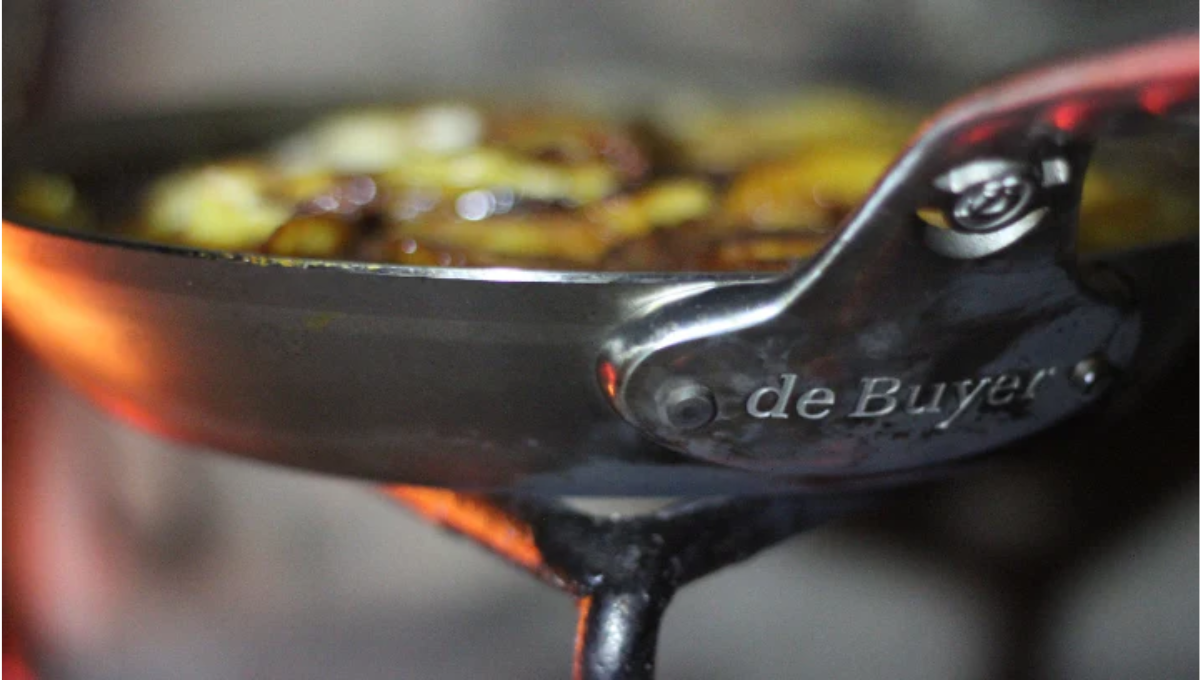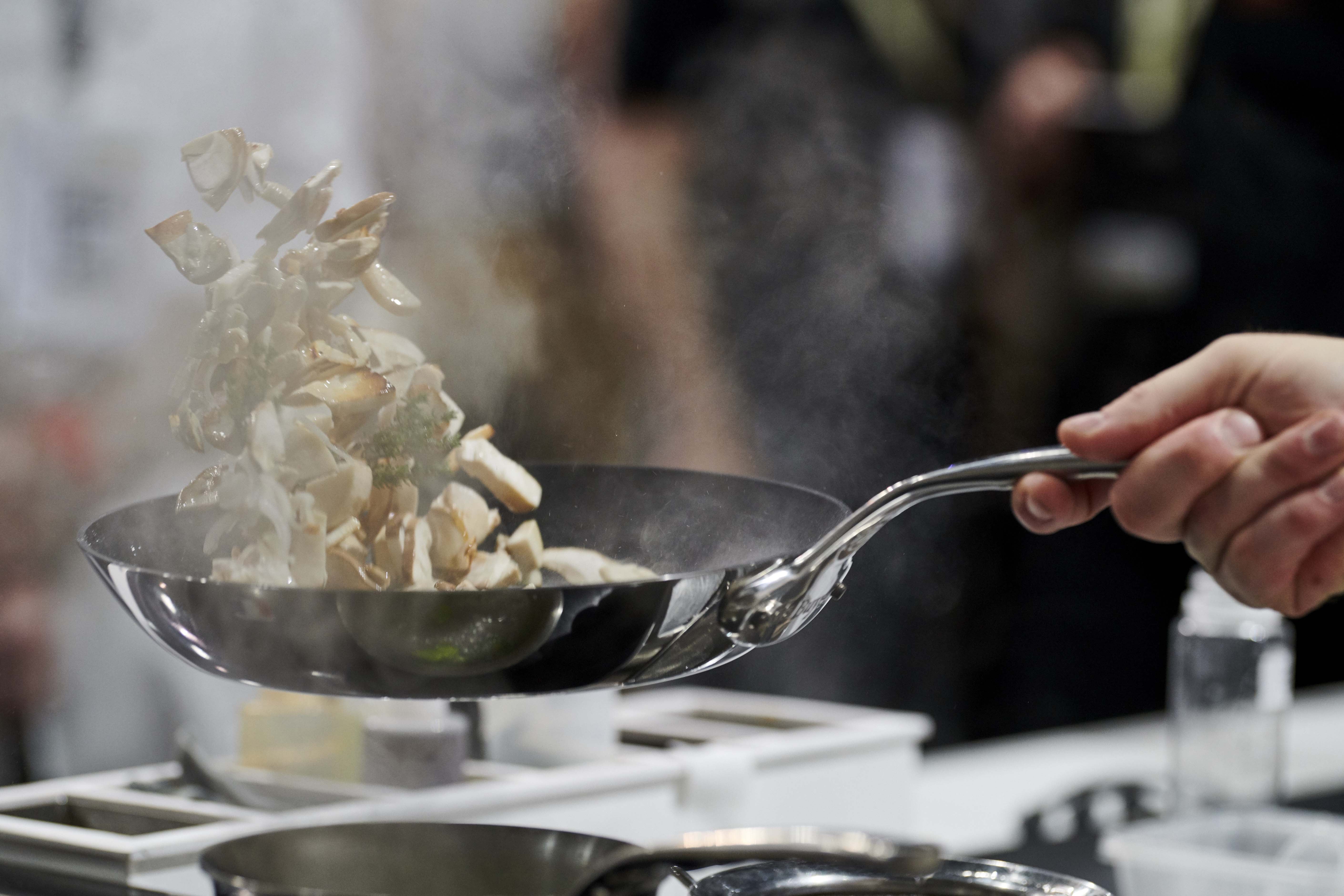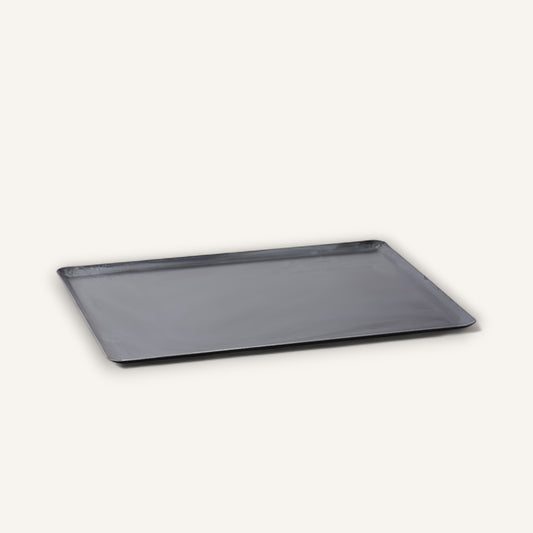Carbon steel cookware offers excellent heat retention and impressive durability and is compatible with all stovetops. If cared for properly, cast iron will perform like new or better for decades. The single most impactful upkeep practice is pan maintenance and cleaning.
This article will provide a comprehensive guide on cleaning and maintaining a seasoned carbon steel pan. Learn which tools you truly need, how to deal with stubborn foods, the best rust removal methods, and more.
de Buyer is a French cookware company that’s been producing carbon steel cookware since 1830. Our centuries of service have honed exceptional quality standards and attention to detail. Use our expert insights to keep your kitchen running smoothly with the best materials possible.
The Myth of Soap and Water
Dish soap and elbow grease may be ideal for scrubbing kitchen counters, but they’re completely inappropriate for carbon steel skillets. This is due to the chemistry of how soap works.
Soap molecules have two ends: a hydrophilic (water-attracting) polar salt and a hydrophobic (water-repelling) nonpolar fatty acid chain. When you wash your hands, the soap acts as a bridge, binding to both water and the oils on your skin, lifting dirt and germs away. It even breaks down bacteria and some viruses, helping to remove and destroy them.
However, this chemical bond cannot differentiate between good oils and bad oils. When you clean a cast iron with soap, the cleaning agent eats away at the pan’s seasoning. This means that after every use of soap, you may have to re-season.
This layer of seasoning, known as the patina, is worth protecting and maintaining. It helps your pan retain a natural nonstick surface, protects from rust, and can add deeper flavorings to your food over time. This patina is also present on cast iron pans and even stainless steel pans.
Note: You may use a small amount of gentle soap to assist in the cleaning process. The key is to dilute the soap with plenty of hot water and rely heavily on gentle scrubbing to remove food waste.
The Right Way to Clean Your Carbon Steel Pan
A one-of-a-kind carbon steel pan reflects your journey in the kitchen. Protect your lifetime pieces from food build-up and rust. Here’s how to clean carbon steel:
-
Immediate Post-Cook Cleanup: Clean your pan while it’s still warm. This helps loosen food particles and prevents them from sticking, making the cleaning process much easier.
-
Hot Water Rinse: Rinse the pan with hot water to remove food residue. The heat helps dissolve any leftover grease and makes it easier to wipe away. To protect the seasoning, we recommend using recently simmering water, not boiling water.
-
Scrubbing Gently: Use a soft sponge or brush to scrub away stubborn food particles. Avoid using abrasive scrubbers like steel wool or a scouring pad, which could damage the seasoning layer.
-
Drying Thoroughly: After cleaning, dry the pan completely with a towel or by placing it upside down to air dry. This step is crucial to prevent rust from forming on the surface of the pan.
-
Add Oil: Once the pan is dry, apply a thin layer of oil to maintain the seasoning and wipe away excess oil with a paper towel or dish towel. Any neutral oil will do, such as canola, grapeseed, or vegetable oil.
This method is the best way to clean your carbon steel cookware. Do not place your pans in the dishwasher or store them wet.
Dealing with Stuck-On Food
Even with proper care, food can sometimes stick to your carbon steel pan. When this happens, it's important to address it carefully to protect the pan's seasoning. Here are a few tips to help:
-
Gentle Persuasion: Start by pouring hot water onto the cooking surface and letting it sit for a few minutes. Then, use a wooden spoon to gently loosen the stuck-on food. This method helps lift debris without damaging the seasoning.
-
Salt Scrub: If food remains stubborn, sprinkle some coarse salt into the pan and use it as a natural abrasive. Scrub gently with a soft sponge or paper towel to remove the residue.
-
Avoid Harsh Chemicals: Remember that detergents, harsh chemicals, and steel wool can strip away the protective layer, making the pan more prone to sticking and rust.
Be gentle during this process, and trust these methods to work for you.
Maintaining Your Carbon Steel Pan
Carbon steel maintenance includes regular seasoning, proper storage, and possibly removing rust. All of your carbon pans should be stored in a dry place where they won’t scratch against one another. A carbon steel pan is fully able to scratch another carbon steel pan. Even minor scratches can encourage rust formation and damage the pan’s non-stick properties.
Re-seasoning is necessary after interactions with acidic foods or harsh soaps. You may also need to re-season if a pan starts to lose its non-stick properties or develops rust spots. You can oven season the de Buyer Mineral B PRO and Blue Carbon Steel collections; however, the Mineral B can only be seasoned on the cooktop.
For a simple cooktop season, lightly coat the inside with your preferred cooking oil, then place it on the stove over medium-high heat. Heat until the oil begins to smoke, then turn off the heat and let the pan cool. Repeat this seasoning process to build up the patina.
If you do notice rust spots you’ll need to remove them before cleaning and seasoning. The following methods are safe to use on carbon steel.
-
Salt Scrub: Sprinkle coarse salt into the pan and use a paper towel to scrub the rusted areas. The salt acts as a gentle abrasive to lift the rust.
-
Scouring: For more stubborn rust, use a scouring pad, steel wool, or another coarse material to scrub the rust away.
-
Vinegar Soak: Mix equal parts vinegar and water, and soak the rusted areas. This will loosen the rust, making it easier to scrub off. Dry the pan off and dust it with baking soda to neutralize the vinegar. Finally, rinse with water and repeat if necessary.
Pan maintenance isn’t complicated for a dedicated chef or home cook. Follow these simple guidelines, and your pan will continue to deliver exceptional results.
Preserve Your Pan’s Perfection with de Buyer
Proper care and washing are key to maintaining the exceptional performance of your carbon steel cookware. Following the right techniques will ensure your pan remains non-stick, rust-free, and ready for any culinary challenge. De Buyer’s commitment to quality and durability makes our carbon steel pans a top choice for chefs and home cooks alike.
Our carbon steel is 99% iron and 1% carbon, allowing our pans to be 40% lighter in weight than cast iron, heating up more quickly and evenly with fewer hot spots. The Mineral B line arrives protected by beeswax, ensuring your investment arrives rust-free and protected from oxidation.
Discover De Buyer’s carbon steel collection and invest in cookware that stands the test of time. With the right care, your new pan will deliver perfect results for decades. Don’t wait—explore our full range and elevate your kitchen today!
